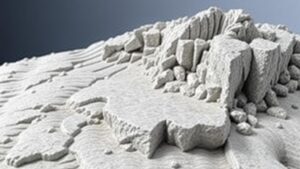Identifying Subtle Stream Features That Trap Fine Gold Particles
Identifying Subtle Stream Features That Trap Fine Gold Particles
Fine gold particles, often referred to as flour gold, present unique challenges for gold prospectors and miners due to their small size and lightweight nature. Understanding the subtle features of stream and river systems that capture these particles is essential for efficient gold recovery. This article explores the hydrodynamics and geology important for identifying such features, providing practical insights for effective gold prospecting.
The Importance of Stream Morphology
Stream morphology refers to the physical shape and flow dynamics of a river or stream. Key features in the streambed, such as pools, riffles, and bends, significantly influence sediment transport and gold deposition.
- Pools: Deep areas in streams where water slows down, allowing heavier particles like gold to settle.
- Riffles: Shallow sections with increased turbulence that create eddies which can capture fine particles.
- Bends: Curved sections of streams where the outer bank experiences high erosion, meanwhile the inner bank slows the current and promotes deposition.
Hydrodynamic Forces and Their Role in Gold Deposition
The principles of hydrodynamics are crucial in understanding how fine gold particles accumulate in various stream features. The relationship between water flow velocity and sediment settling velocity determines where gold will collect.
Fast-moving water in riffles increases turbulence, which can keep gold suspended longer, while slower-moving zones in pools allow finer particles to settle due to gravity. For example, a study by the US Geological Survey noted that gold deposits in the Sierra Nevada region often accumulated behind boulders in moderate flow areas, where water deceleration occurs.
Geological Considerations for Fine Gold Trapping
The underlying geology of a streambed influences its capacity to trap fine gold. A streambed with a composition of varied sediment sizes, particularly a mix of gravel and fine silt, is more likely to retain fine gold.
- Cobble and Boulders: Create hydrodynamic barriers that can trap fine gold particles in the slower water behind them.
- Vegetation: Roots and plant material can catch and hold sediment, providing additional locations for gold retention.
Fine Gold Indicators: Searching for Clues
Recognizing features that suggest the presence of fine gold requires keen observation and experience. Some indicators include:
- Concentrated Black Sands: Often associated with gold; these dense minerals are an indication of heavier particle accumulation.
- Presence of Larger Nuggets: Finding larger fragments can often lead one to more concentrated fine gold areas.
- Observation of Flow Patterns: Identifying where water flows slower compared to surrounding areas – such as near a large rock – can indicate potential traps.
Case Studies: Successful Gold Trapping Locations
Several case studies highlight the effectiveness of identifying subtle stream features for gold prospecting:
- Happy Camp, California: Prospectors reported high yields of fine gold collected from pool areas formed behind rock outcrops.
- Colorados Clear Creek: Studies determined that the sedimentary structure of the creek, featuring alternating riffles and pools, optimized gold deposition.
Conclusion and Actionable Takeaways
Identifying subtle stream features that trap fine gold particles is a vital skill for prospectors seeking to maximize their yields. By understanding stream morphology, hydrodynamics, and geological influences, one can better target specific locations for gold recovery. Key takeaways include:
- Focus on pools and riffles where fine gold is likely to settle.
- Observe flow patterns and sediment types to identify potential hotspots.
- Use geological clues, such as the presence of black sands or larger nuggets, as indicators of gold presence.
By leveraging this knowledge, prospectors can enhance their efficiency and effectiveness in fine gold recovery efforts.



